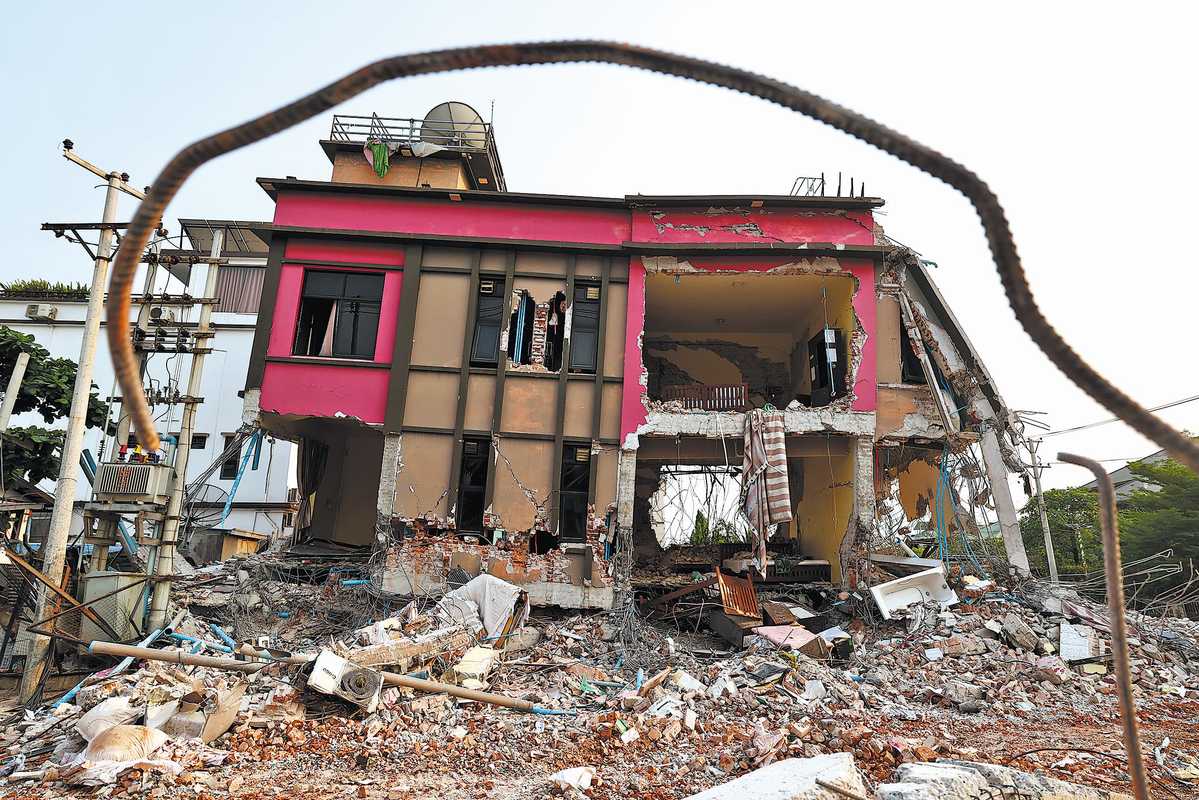Preparedness a priority
Nations should not only be ready for the possibility of an earthquake, but also make efforts to mitigate impacts of such a disaster: Experts


Looming threat
With the sudden onset of such a devastating crisis, there have been speculations about whether this earthquake is an indicator of disasters that may recur in the future within the region.
Misinformation on social media has exacerbated the collective panic among people about the possibilities of earthquakes and the authorities' ability to mitigate the impact of such disasters.
In this regard, Hossain told ANN, "Earthquakes are the only natural disasters that cannot be predicted even a few seconds in advance."
There is no way to warn authorities and the public. This region has many large-scale fault lines, of which many are quite active.
"This includes the Sagaing fault which has experienced about nine major earthquakes in the past 100 years, the Chittagong Coastal fault, the Main Frontal Thrust fault, the Dauki fault, the Oldham fault, the Madhupur fault and the Sylhet fault," he said.
Hossain said most of these faults have recurrence intervals between 20 and 30 years and 200 and 500 years. These faults can impact India, Bangladesh, Nepal, Bhutan, Thailand and Myanmar.
"Thus, I cannot say when or exactly where there can be an earthquake, but I can say there is a looming threat to the region, and we must be prepared," he said.
While analyzing the possible risks of major earthquakes in the region, Hossain mentioned that a lot of major cities in South Asia, such as Mandalay, Naypyidaw, Bangkok, Silchar, Kathmandu, Kolkata, and Dhaka, are built on flatlands and soft sediments.
Earthquakes in flatlands and areas with soft sediment, like delta and basin regions, can result in unique and potentially damaging effects, including liquefaction and ground deformation, which increases the odds of higher damages to the region experiencing the earthquake, including possible subsidence and landslides.
Thus, it is crucial for nations, especially those with densely populated areas and cities, to make necessary arrangements to not only prepare for the possibility of an earthquake and mitigate the possible impacts of such disasters, but also to spread awareness to the public about what can be done and how they can be prepared themselves.
"Authorities must increase their knowledge and vigilance over earthquake hazard assessment capacity, and by investing in equipment and stations that would observe overall seismic activities within the region, giving them the scope to collect as much information as possible.
"Reducing vulnerabilities to power, water, gas and telecom networks is also an extremely important step for authorities, as these infrastructures often take the first hit. Investing in rescue equipment is also a must for each nation in this region," Hossain said while highlighting some of the crucial steps required for managing and preparing for the possibility of major earthquakes.
"Policies and building codes must be updated and strictly implemented to ensure proper construction of earthquake-resistant establishments or infrastructures for all new projects. Authorities must also enforce retrofitting and other engineering measures for older constructions and buildings, allowing impending damage to be minimized," he added.
He further mentioned, "There should be campaigns and training available to make people aware of what to do in case of such an emergency, and make it available in all educational institutes, at all levels and capacities, to better understand what the disaster is and how to keep themselves prepared for it."
Asia News Network

































